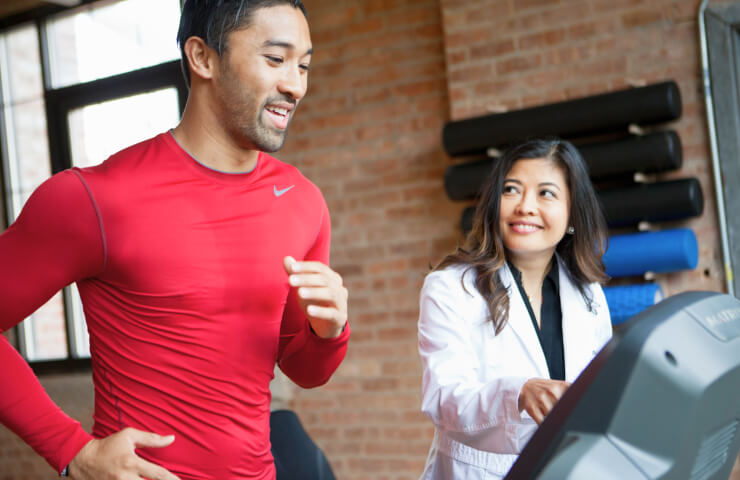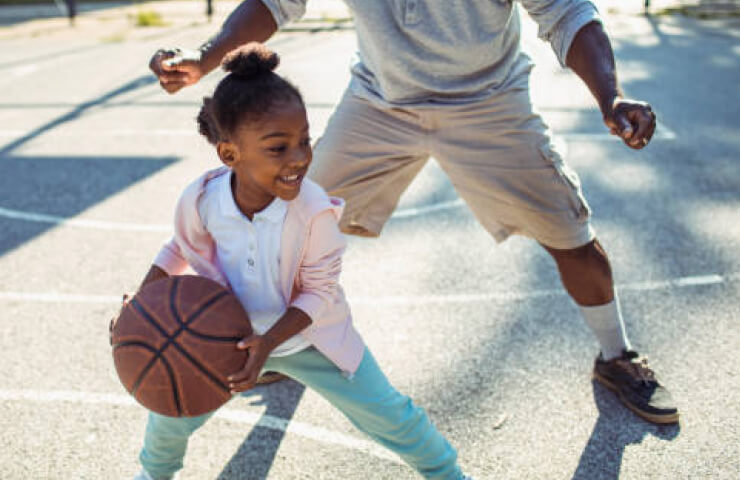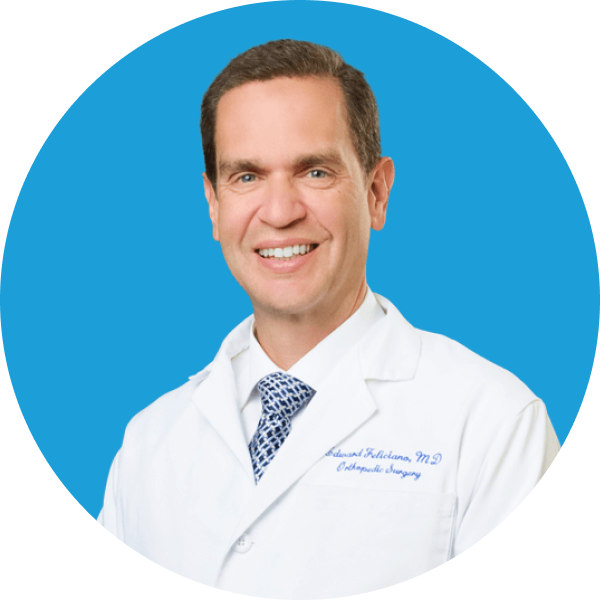Leg Conditions
The legs are two stem-like limbs that comprise the lower half of the body and enable us to perform a wide variety of functions and movements. Leg pain is often caused by regular wear and tear, injuries, or overuse. Some forms of leg pain are caused by circulation issues and blood clots. Like other dynamic parts of the body, the legs are susceptible to joint inflammation and arthritis.
When leg pain is significant, it can have a severe impact on everyday life, especially if the pain reduces your ability to get around.
We Specialize in Treating
All Leg Conditions
- Leg Fracture
- Leg Pain/Injury
- Restless Leg Syndrome
- Sacroiliac Joint Dysfunction
- Stress Fracture
- Shin Splints
Get Advanced Leg Care Right In Your Neighborhood
Finding the treatment that’s right for your leg problem is our focus at The Orthopedic Health Center. We use non-surgical treatments whenever possible. When you do need surgery, our expert surgeons help you heal faster and with less pain. All right in your neighborhood: Hoboken, Jersey City, or Bayonne.
Anatomy of the Leg
Although the legs are often viewed as singular limbs, each leg actually consists of five distinct areas: the upper leg, the knee, the lower leg, the ankle, and the foot. This page will review the anatomy and injuries of the upper and lower leg. For more information about other parts of the leg, visit our Knee Pain and Foot & Ankle Pain pages.
The upper leg, also known as the thigh, consists of a single bone known as the femur. It is the longest and strongest bone in the entire body. It connects to the hip at the top through a ball-and-socket joint and connects to the lower leg through the knee joint. The lower leg consists of two bones:
- The tibia, or shinbone, which provides weight-bearing support for the body
- The fibula, a shorter bone that provides structural stability for the muscles in the lower leg
Both the upper and lower regions of the leg are supported and powered by several muscles.
Muscles of the Upper Leg
In addition to the longest bone of the body, the upper leg also contains some of the largest muscles. Thigh muscles provide support for weight-bearing, balance, and hip and leg alignment, as well as provide us with the power to move (bend, flex, etc) . The muscles of the thigh are split into five different groups:
- Adductors: Located in the hips, adductor muscles allow you to draw your thighs towards each other, assist with balance, and enable the ability to rotate your hips and legs. Adductor muscles also maintain leg and hip alignment.
- Hamstrings: Located in the back of the thigh, the hamstring muscles make it possible for you to bend at the knee. There are three hamstring muscles – semimembranosus, semitendinosus, and biceps femoris.
- Pectineus: Located in the front and inner part of the thigh, the pectineus muscle’s primary function is to allow the leg to move towards the body.
- Quadriceps: Located in the front and sides of the thigh, the quadriceps muscles play a significant role in many regular leg activities, including standing and walking. As the name suggests, the quadriceps consists of four muscles – the rectus femoris, vastus lateralis, vastus medialis, and vastus intermedius.
- Sartorius: Located along the entire length of the thigh, the sartorius is the longest muscle in the body. It connects to both the hip and knee joints and helps to provide movement in both.
Muscles of the Lower Leg
The lower leg is supported by several muscles, including:
- Gastrocnemius: Located in the back of the calf, this large muscle connects to the femur and patella at the top and to the Achilles tendon at the bottom. As one of the primary muscles of the calf, it provides us with the ability to flex our knees, feet, and ankles.
- Soleus: Also located in the back of the calf, behind the gastrocnemius, the soleus muscle plays a critical role in our ability to stand, hold our balance, walk, and run.
- Peroneus muscles: Located in the front side portion of the lower leg along the fibula and tibia bones, the peroneus muscles assist with bending your foot forward and back. There are three peroneus muscles – peroneus longus, peroneus brevis, and peroneus tertius.
- Plantaris: Located in the back of the lower leg, the plantaris is a small muscle that provides support for plantar flexion of the ankle and knee. Plantar flexion is the movement that makes it possible for you to point your toes or move your foot in a downward motion.
- Tibialis muscles: Located in the back and front sides of the lower leg, these muscles provide different functions. The front tibialis muscles assist with the ability to bend your foot forward and back, while the back tibialis muscles assist with plantarflexion as well as support for the arch of the foot.
Leg Pain FAQ
A: Leg pain is a very common issue that can be caused by a myriad of factors, including general use, overuse, underlying conditions, infections, and injuries. In some cases, leg pain will be mild and will go away after a few days of at-home care. However, there are some scenarios that should be considered emergency situations, such as if you are unable to walk or bear your own weight, or if you experience a popping sensation at the time of a leg injury. You should also seek immediate medical attention if your leg pain accompanies any other seemingly unrelated symptoms, such as trouble breathing or signs of infection (fever, swelling, redness, etc.). Aside from urgent medical situations, you should see a doctor for your leg pain if the pain continues to worsen, doesn’t go away, or is accompanied by swelling.
A: While overuse of legs can definitely cause pain, so can underuse. Being active is a critical part of maintaining general health. In terms of musculoskeletal health, activity helps to keep muscles, joints, and bones in good working order. Leg pain and stiffness after periods of inactivity can be a sign that you’re not getting enough physical activity and muscle engagement on a regular basis.
A: Mild forms of leg pain from strain and minor injuries can sometimes be successfully managed at home using one or a combination of self-care techniques. These techniques can include rest, using over-the-counter pain relievers (e.g. ibuprofen, naproxen, etc.), applying an ice pack to the affected area, gentle stretching, and elevating your leg. If your pain continues to persist in spite of these remedies, it’s a good idea to schedule an appointment with an orthopedic doctor who specializes in treating leg pain.
The Most Advanced Surgical Techniques
Take a closer look at the level of care to expect at The Orthopedic Health Center.
Types of Musculoskeletal Leg Injuries
Because the legs are large, complex, and essential to many functions, there are many different types of injuries and stresses that can occur. The most common types of musculoskeletal leg injuries include:
- Dislocation, which is when a bone pops out from a joint
- Fracture, which is commonly known as a broken bone
- Muscle overuse, which is commonly caused by exercise and sports
- Sprains, which is when ligaments become over-stretched and torn
- Strains, which is when muscles become over-stretched and torn
Comprehensive Orthopedic Care for Leg Pain
Treatment for leg pain is highly dependent on what’s causing the issue. At The Orthopedic Health Center, we take a conservative approach and utilize non-surgical treatment options whenever possible. Some of our treatment options for leg pain includes:
If surgery is needed, our orthopedic surgeons can help you recover faster and with less pain. Contact us today for advanced orthopedic leg pain care right in your own neighborhood.
Edward Feliciano, MD
Director of Orthopedic Surgery
Edward Feliciano, MD is a board-certified orthopedic surgeon and the Director of Orthopedic Surgery with training from Yale, Cornell and Georgetown University.
Appointments available now.















